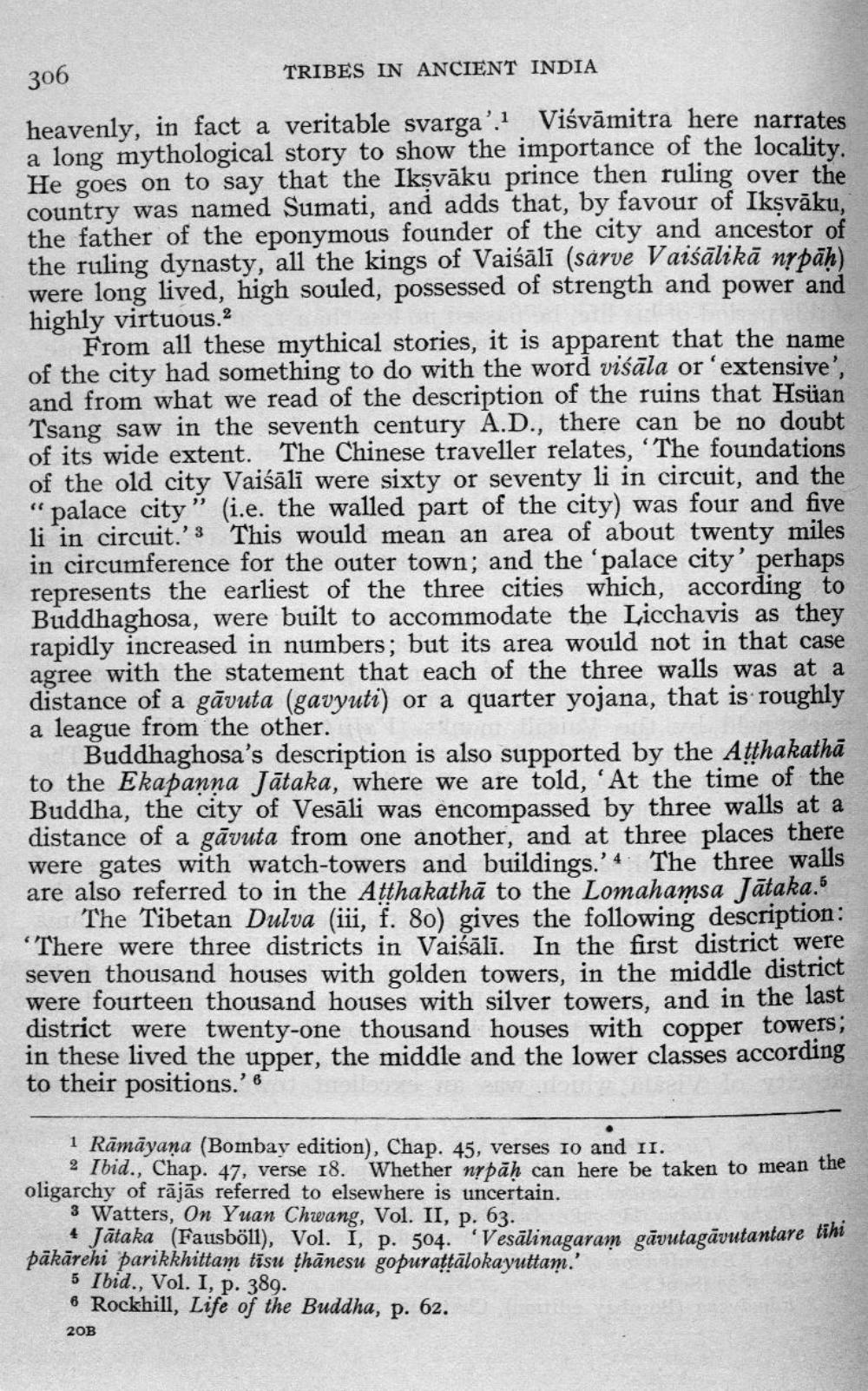________________
306
TRIBES IN ANCIENT INDIA heavenly, in fact a veritable svarga'.1 Viśvāmitra here narrates a long mythological story to show the importance of the locality. He goes on to say that the Ikşvāku prince then ruling over the country was named Sumati, and adds that, by favour of Iksvāku, the father of the eponymous founder of the city and ancestor of the ruling dynasty, all the kings of Vaiśālī (sårve Vaiśālikā nepāh) were long lived, high souled, possessed of strength and power and highly virtuous.2
From all these mythical stories, it is apparent that the name of the city had something to do with the word viśāla or 'extensive', and from what we read of the description of the ruins that Hsüan Tsang saw in the seventh century A.D., there can be no doubt of its wide extent. The Chinese traveller relates, “The foundations of the old city Vaiśāli were sixty or seventy li in circuit, and the “palace city” (i.e. the walled part of the city) was four and five li in circuit.'3 This would mean an area of about twenty miles in circumference for the outer town; and the 'palace city' perhaps represents the earliest of the three cities which, according to Buddhaghosa, were built to accommodate the Licchavis as they rapidly increased in numbers; but its area would not in that case agree with the statement that each of the three walls was at a distance of a gāvuta (gavyuti) or a quarter yojana, that is roughly a league from the other.
Buddhaghosa's description is also supported by the Atthakathā to the Ekapanna Jātaka, where we are told, 'At the time of the Buddha, the city of Vesāli was encompassed by three walls at a distance of a gāvuta from one another, and at three places there were gates with watch-towers and buildings.'4. The three walls are also referred to in the Atthakathā to the Lomahamsa Jātaka.
The Tibetan Dulva (iii, f. 80) gives the following description: "There were three districts in Vaiśālī. In the first district were seven thousand houses with golden towers, in the middle district were fourteen thousand houses with silver towers, and in the last district were twenty-one thousand houses with copper towers; in these lived the upper, the middle and the lower classes according to their positions.'
1 Rāmāyana (Bombay edition), Chap. 45, verses to and II.
2 Ibid., Chap. 47, verse 18. Whether nrpāh can here be taken to mean the oligarchy of rājās referred to elsewhere is uncertain.
3 Watters, On Yuan Chwang, Vol. II, p. 63.
+ Jataka (Fausb611), Vol. I, p. 504. Vesalinagaran gatagauntantare Wh pākārehi parikkhittam tisu thānesu gopurattālokayuttam.'
5 Ibid., Vol. I, p. 389. 6 Rockhill, Life of the Buddha, p. 62. 20B




